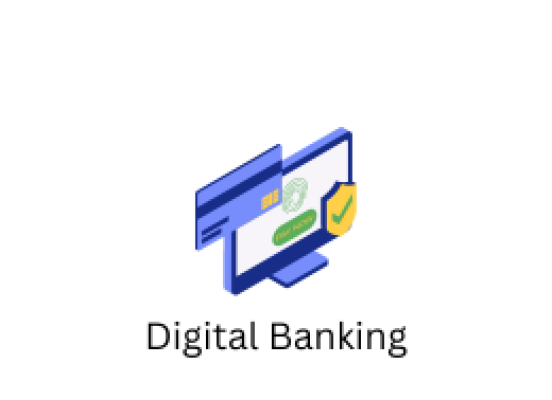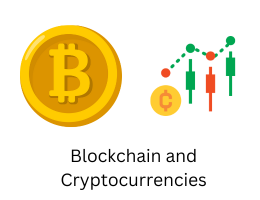
Digital Banking: Discuss the evolution of digital banking, neobanks, and the impact of mobile apps on traditional banking services
- By admin --
- Tuesday, 07 Nov, 2023
In recent years, the financial industry has witnessed a significant transformation driven by technological advancements. One of the most notable shifts has been the evolution of digital banking, which has fundamentally changed the way people manage their finances. This article delves into the evolution of digital banking, the emergence of neobanks, and the profound impact of mobile apps on traditional banking services.
The Evolution of Digital Banking:
Digital banking, often referred to as online banking or e-banking, has a rich history dating back to the 1980s when banks first started using computers to process transactions. However, it wasn't until the late 1990s and early 2000s that online banking gained widespread acceptance among consumers. Initially, these services primarily involved checking account balances and transferring funds between accounts.
As the Internet became more accessible and secure, digital banking services expanded their capabilities. Consumers could perform a wide range of tasks from their computers, including bill payments, account statements, and even applying for loans. This marked the first significant shift away from traditional brick-and-mortar banking towards digital alternatives.
The evolution of digital banking was further accelerated with the advent of mobile devices. The introduction of smartphones and the development of mobile apps provided a platform for banks to offer convenient, on-the-go banking services. Customers could now check their balances, deposit checks, and pay bills with just a few taps on their smartphones.
The Rise of Neobanks:
As digital banking continued to evolve, a new player entered the scene – neobanks. Neobanks are 100% digital, branchless financial institutions that aim to provide a superior, user-centric banking experience. These institutions have gained traction due to their flexibility, minimal fees, and customer-centric approach.
Neobanks offer a range of financial products and services, including checking and savings accounts, payment solutions, and personal loans. Unlike traditional banks, neobanks typically do not have physical branches. Instead, they operate entirely online and leverage advanced technology to streamline their operations and reduce costs. This cost-efficiency often results in lower fees and better interest rates for customers.
Moreover, neobanks are known for their user-friendly interfaces and innovative features. They often offer budgeting tools, real-time transaction notifications, and seamless international currency conversion. These features resonate with a tech-savvy, mobile-first generation that values convenience and transparency.
Notable neobanks like Chime, Revolut, and N26 have gained substantial market share and customer loyalty. Their rapid growth has prompted traditional banks to adapt and enhance their digital offerings to remain competitive. As a result, the traditional banking industry is now experiencing a paradigm shift towards a more digitized and customer-focused model.
The Impact of Mobile Apps:
One of the most significant drivers of the digital banking revolution has been the widespread adoption of mobile apps. Mobile banking apps have become indispensable tools for both traditional and neobanks, allowing customers to access their accounts and manage their finances anytime and anywhere.
Mobile banking apps offer a host of features that were previously unimaginable with traditional banking methods. Here are some key ways in which mobile apps have transformed banking:
-
Convenience: Mobile apps provide unparalleled convenience. Customers can check their account balances, transfer funds, pay bills, and deposit checks without having to visit a physical bank branch. This on-the-go accessibility has redefined the concept of banking hours.
-
Enhanced Security: Mobile banking apps employ robust security measures, including biometric authentication and encryption, to protect sensitive financial data. This has reassured consumers about the safety of digital transactions.
-
Personalized Experiences: Mobile apps are equipped with AI-driven features that analyze user behavior and preferences, allowing banks to offer personalized financial insights, product recommendations, and services.
-
Faster Transactions: Mobile apps enable near-instantaneous money transfers between accounts and even across borders. This has revolutionized international remittances and made cross-border transactions more efficient and cost-effective.
-
Innovative Payment Solutions: The rise of mobile wallets and contactless payment options within banking apps has contributed to the declining use of physical cash and credit cards. Customers can now make payments with a simple tap of their smartphones.
-
Seamless Customer Support: Many banking apps provide integrated chat or customer support features, allowing users to resolve queries or issues directly through the app. This real-time support fosters customer trust and satisfaction.
-
Paperless Statements and Documentation: Mobile apps encourage the reduction of paper usage by providing electronic statements, documents, and receipts, contributing to environmental sustainability.
-
Financial Education: Banking apps often include educational resources and tools to help users manage their finances more effectively, promoting financial literacy.
The COVID-19 pandemic further accelerated the adoption of mobile banking, as social distancing measures encouraged people to conduct their financial activities remotely. Many customers who were initially hesitant to embrace digital banking have now become regular users of mobile apps, appreciating the convenience and safety they offer.
The Future of Digital Banking:
The evolution of digital banking is ongoing, and it is expected to continue shaping the financial landscape. Some potential developments to watch for in the future include:
-
Open Banking: Open banking initiatives are creating opportunities for third-party financial service providers to access and integrate with a customer's financial data. This can lead to more innovative and personalized banking experiences.
-
Digital Currencies: Central bank digital currencies (CBDCs) and private cryptocurrencies may become more integrated into digital banking platforms, potentially transforming the way people transact and save money.
-
Advanced AI and Machine Learning: The use of artificial intelligence and machine learning will continue to grow, allowing banks to offer more sophisticated financial services, such as predictive analytics, automated investing, and risk assessment.
-
Enhanced Cybersecurity: Banks will invest heavily in advanced cybersecurity measures to protect customer data and mitigate the growing threat of cyberattacks.
-
Sustainable Finance: An increasing focus on sustainable and responsible banking practices will lead to the integration of eco-friendly financial products and investments within digital banking platforms.
In conclusion, digital banking has come a long way from its humble beginnings as a basic online service. The emergence of neobanks and the impact of mobile apps have challenged traditional banking institutions to adapt, innovate, and enhance their offerings. The future of digital banking promises even greater convenience, security, and personalization, making it an integral part of modern financial services. As technology continues to evolve, the financial industry will undoubtedly see further transformations, with digital banking at the forefront of change.





